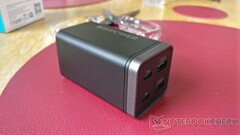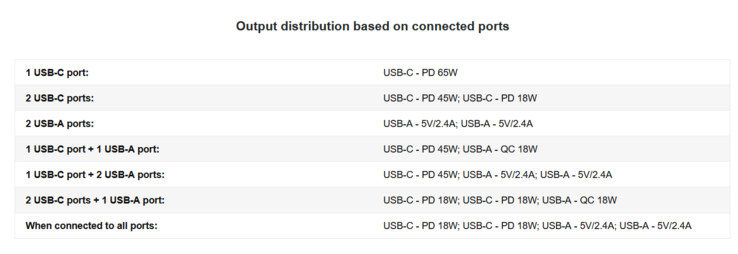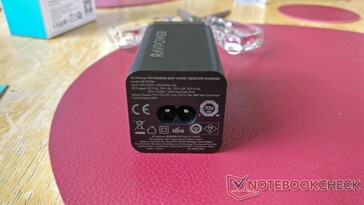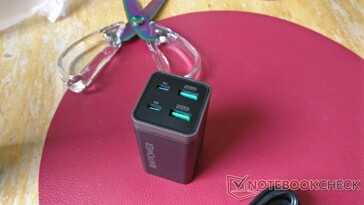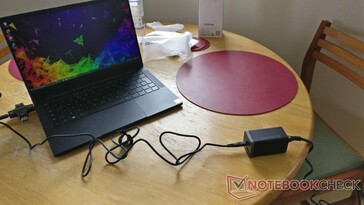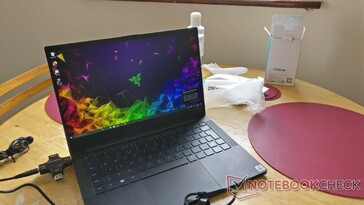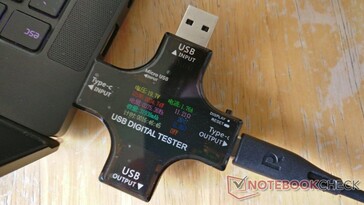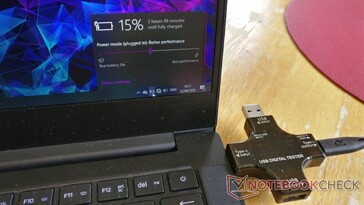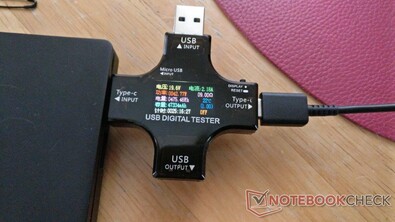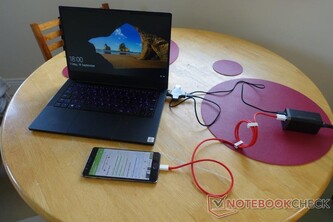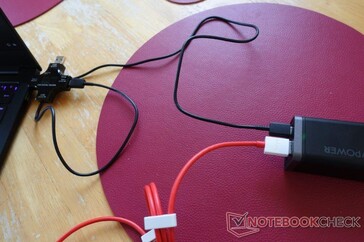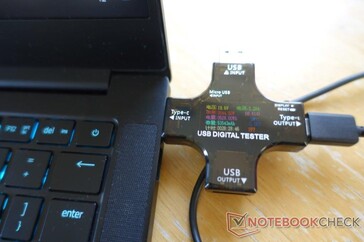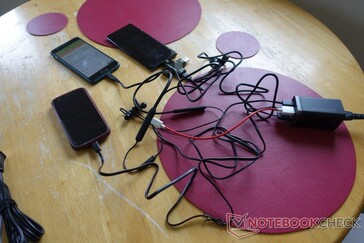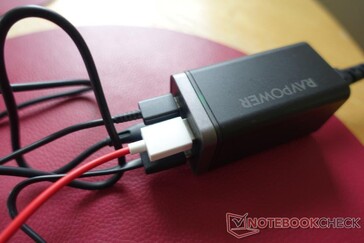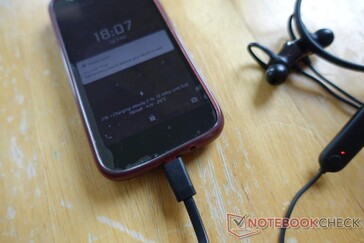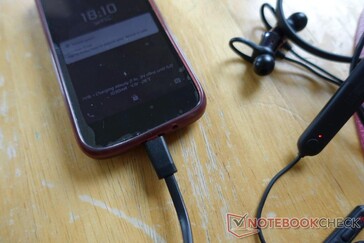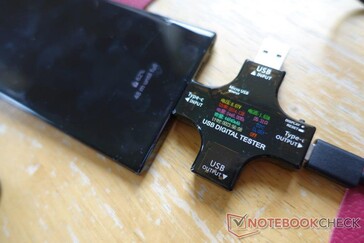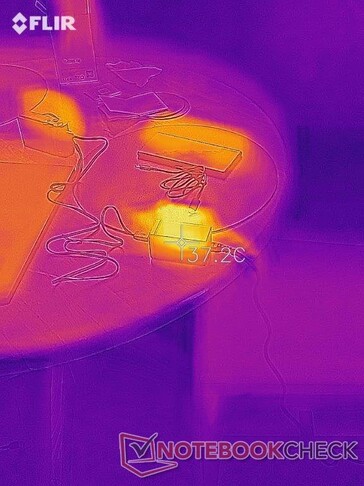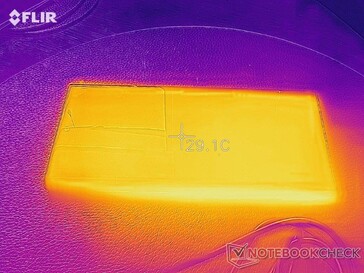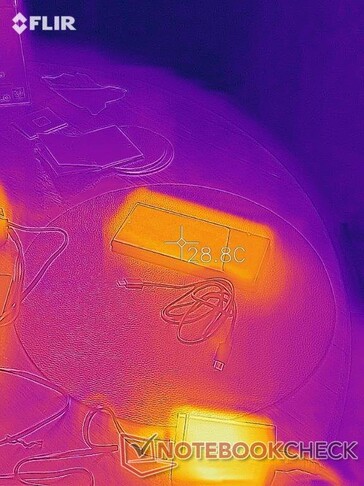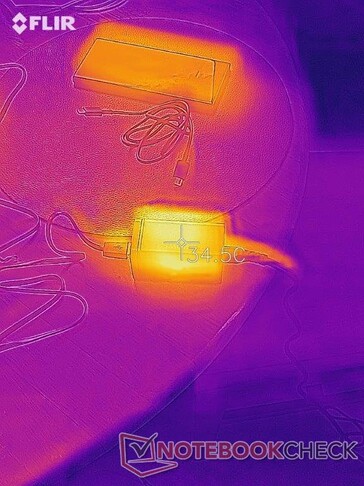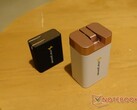RAVPOWER is known as a maker of third-party wall chargers rated for high charging speeds and fancy gallium-nitride (GaN) specs. However, none of them has more than two ports apiece, which may be insufficient for some power users. The brand may have sought to address this with what it calls a "desktop charger": An accessory with four USB ports powered by a conventional 2-pin connector on its opposite side.
Two of these ports are type Cs with the Power Delivery (PD; 5V/3A, 9V/3A, 12V/3A, 15V/3A or 20V/3.25A, 65W Max) standard, and two are type A (5V/3A, 9V/2A, 12V/1.5A, 18W Max) ports with this OEM's proprietary iSmart charge-regulating technology. It is rated to deliver a total of 65 watts (W) from either of the PD outputs when used on their own, although this apparently falls to 45W from one and 18W from the second when both are in use.
The same applies if one type C and one type A port are used at the same time, whereas counting the second type A in drops both of those down to an ultra-standard 5V/2.4A rate. In fact, there are quite a number of additional permutations based on the combinations of ports used.
First Impressions
The 4-port charger (or RP-PC136) comes in a white box with blue branding and accents like those of the RAVPOWER GaN-tech charging bricks previously reviewed here on Notebookcheck. Unlike those accessories, however, this one has an oblong black metallic casing with a gray band around one end. The effect is one of a high-end NUC, although obviously the only input here is a 2-pin power connector, and the only ports are various USBs for charging.
It creates an appreciably high-end experience; saying that, its casing is quite prone to sliding around on wooden surfaces. It connects via a DC cord (identical to the one shipped with the VAVA 12-in-1 dock) rather than directly to the wall, and also has an LED, placed on the top just below the gray accent, that glows green when it is powered on.
I initially tried this multiport charger with my Razer Blade Stealth on its own. This initially proved disappointing, as it exhibited a result of only about 35W (19.7V/1.76A), whereas the 65W brick from this accessory's same line got up to about 43W.
However, trying a different type C to C cable resulted in a performance similar to that of the aforementioned standalone charger. This was strange as the first cable was from the 4-port charger's own brand (it had come with the 90W charger from this same series) - especially as I went back and checked the 65W brick again with both cables, and got results in line with my testing of it and its wall-wart siblings.
Therefore, I plugged my OnePlus 3 in alongside the PC via an iSmart port, expecting this to make the Blade Stealth's rate go down. Oddly, this did not happen: the multimeter continued to show values in the 43W region, whereas the phone (which, as is clear from long experience, will only play nicely with its own branded power-brick) charged at a standard ~7W rate (rather than its maximum possible 20W).
Adding a Galaxy Note 10+ via another type C to C cable into this mix stopped the Blade Stealth charging altogether (obviously, even if it was getting 18W, this was nowhere near enough for it). However, even disconnecting the PC at this point did nothing to the Samsung phablet's charging speed: It persistently remained at ~14W, even if the OnePlus phone was also disconnected. Even testing it with a USB type C to A cable did not change this result, although it did indeed bring the PC's rate down to ~35W if it had been plugged in via one of the PD ports beforehand.
Then again, connecting both these devices again and adding two more (a first-gen Motorola Moto G kept around out of sentimentality for what this OEM could once offer; and, finally, my wireless earphones (also from OnePlus)) resulted in competent, if relatively low-speed, charging from all four of these. The third phone's software-based lock-screen readout showed ~4V/700mA initially, a little lower than its normal rate. However, leaving it a while with its screen off brought this measurement up to its more usual ~4V/1A.
Therefore, it seems the device functions adequately, although I was unable to confirm the 65W spec outright. Then again, testing again with the Galaxy Note 10+ alone and with this phone's own type C to C cable resulted in the same 14W rate. This was mildly frustrating, as the phone is rated for much faster charging and the PD standard to boot. In fact, this is the third product from this company that has failed to match even the Note 10+'s 25W basic rate.
Temperature Test: the GaN edition (mark II!)
Besides this issue, I had yet to address this accessory's claimed GaN-tech nature, which is often touted to stay cooler while in use over time. Time then to break out the FLIR One and point it at this 4-port item after an hour of charging (at which point I had to plug in my digital camera - which powered up at its usual bog-standard microUSB rate).
Conclusion
This RAVPOWER 4-port charger seems best suited to those with a range of daily-use devices constantly queuing up to be charged. It was capable of powering a 100W laptop at a rate comparable to that of a dedicated USB charger of the same rated wattage. The fact that the two were of the same brand seems to make this result all the more viable.
However, when presented with a chance to outdo its GaN-equipped siblings with the Galaxy Note 10+, not to mention show off some up-to-45W action while simultaneously powering slower-charging devices, it seemed not to want to grasp this particular opportunity.
Its only other major failing in my experience is its variable performance with different type C to C cables. Therefore, it may be advisable for prospective customers to have the ones that came with the devices they want to charge with this accessory to hand while doing so.
Otherwise, this desktop charger may be for those short on power outlets, like new charging tech and are in a position to splash out on a new solution that addresses both. This is just as well, as this RAVPOWER product is currently priced at US$58.99 on its own website or at US$69.99 (or 15% less with the coupon DEIPC136 (possibly effective for a limited time only)) on Amazon.
Disclaimer: The author of this review received the PD Pioneer from RAVPOWER free of charge for the purpose of testing.
Source(s)
Own




